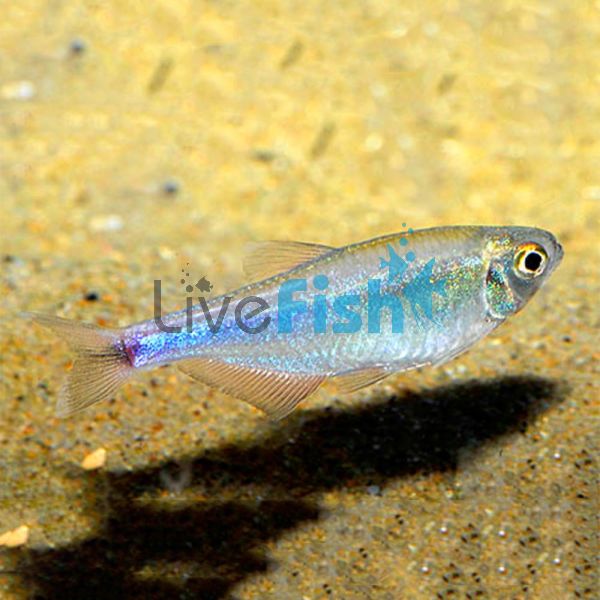Cochus Blue Tetra 2cm
For the aquarists that are casing a simple, small, and stunning tetra to add to a planted aquascape or nano aquarium, then the cochus blue tetra would be a perfect consideration. These are extremely under-rated schooling fish that tend to be overshadowed by the more common rummy nose or neon tetra however for a unique and common addition, this would be a great go-to species
Cochus Blue Tetra
For the aquarists that are casing a simple, small and stunning tetra to add to a planted aquascape or nano aquarium, then the cochus blue tetra would be a perfect consideration. These are extremely under-rated schooling fish that tend to be overshadowed by the more common rummy nose or neon tetra however for a unique and common addition, this would be a great go-to species
The best way to imagine a cochus blue tetra is to picture a cardinal tetra with no red and all blue. Though these fish don’t have a striking neon blue colouration, their more sparkling power blue is stunning in its very own league. This sort of natural blue colour is something that is hardly ever seen in aquarium fish unless they have been selectively bred. The body colour of the cochus blue tetra tends to be a pale grey which then has a layer of sparkling blue. Because the actual fish is semi-translucent, the blue shine really does look like it has been painted over the fish. These tropical fish only reach a maximum size of 5cm which makes them perfect for a desktop planted tank or even a massive community tank where these fish can be the main school.
Breeding these fish in captivity is possible however it is fairly uncommon due to the fact that these fish are not overly popular amongst the general aquarist base. However, in a breeding setting females will scatter eggs through the aquarium and males follow by fertilising. This can be done in a small 40-litre aquarium with an abundance of java moss or spawning mops. The parent fish should be fed with a lot of micro live or frozen foods to get them into breeding conditions. After being placed in the spawning tank, the parents can be removed after 48 hours as this is ample time for them to lay eggs.
Tank Recommendations for your Cochus Blue Tetra
Being a small and relatively easy to care for fish the Cochus blue tetra can be kept in smaller aquariums with the minimum being 75 litres. This aquarium size allows for a decent school of these tetras along with other community fish if required. Cochus tetras would also look equally amazing in large schools of 20 or more in a larger aquarium setting which really highlights their shoaling behaviour. A sand or gravel substrate would be fine for these fish as well as a lot of plant growth which not only makes them contrast really well but also makes them more comfortable in the aquarium.
Suitable Tank Buddies
The cochus tetra is an extremely peaceful fish that displays no aggression, they can be kept with a wide range of fish being top, bottom and mid dweller fish.
Usually Compatible
Discus, Angelfish, glow light tetras, neon tetras, Apistogramma, rams and a range of dwarf/nano peaceful fish.
Sometimes Compatible
Cochus blue tetras can be a relatively slow fish so any fin-nipping species or fish which may outcompete them for food such as Uaru, Mascara barbs and similar species.
Rarely Compatible
Large and aggressive species such as rainbow sharks, Raphael catfish, and larger-mouthed community fish may pester or prey on the tetras.
Feeding your Cochus Blue Tetra
Cochus blue tetras are a very easy fish to feed. They will take a wide range of pellets, flakes and frozen foods. Just like any fish though they should be fed a varied diet with a mix of different foods. The ideal diet would be a good quality micro slow-sinking pellet or crushed flake, supplemented with frozen bloodworms or black worms. They will also easily take ve foods like baby brine shrimp or micro worms.
| Scientific Name | Boehlkea fredcochui |
|---|---|
| Care Level | Easy |
| Common Names | Characidae |
| Diet | Omnivore |
| Fish Family | Characidae |
| Lifespan (years) | 4 |
| Max. Length (cm) | 5 |
| Min. Tank Volume (l) | 75 Liters |
| Origin | South America |
| Reef Safe | Yes |
| Sociability | Peaceful |
| Venomous | No |
| Water Conditions | 24-26° C, pH 6.0-7.0 |




